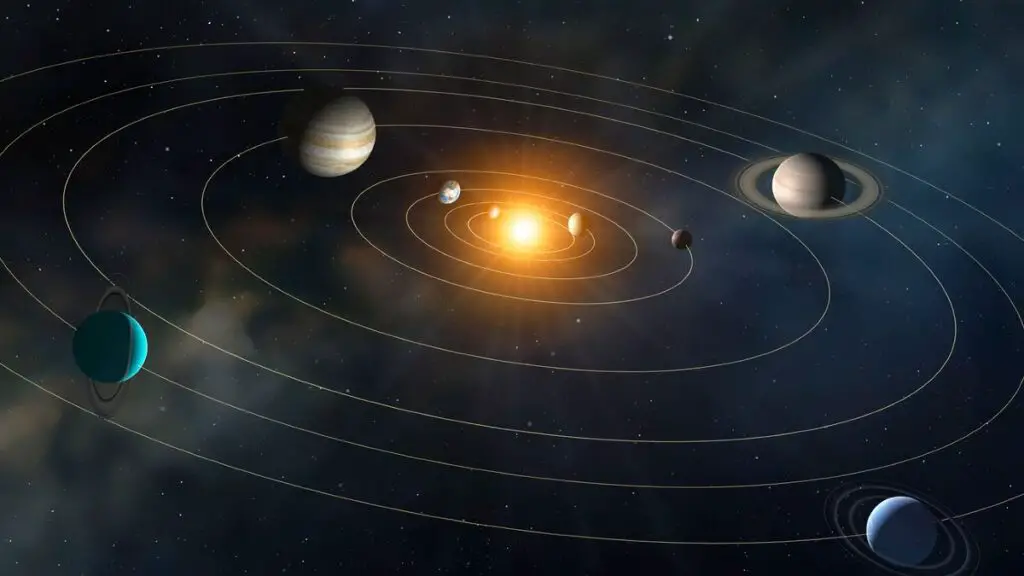“The Fascinating Orbits of the Solar System’s Planets and Their Countless Trips Around the Sun”
When we look up at the sky, it’s easy to forget that the Earth is hurtling through space at more than 67,000 mph. But what’s even more mind-boggling is to consider that our planet is just one of eight, circling the sun at breakneck speeds, completing countless orbits over billions of years.
The birth of our solar system occurred around 4.6 billion years ago, as the sun formed from a cloud of dust leftover from previous stellar explosions. Roughly 4.59 billion years ago, the giant planets like Jupiter, Saturn, Uranus, and Neptune were born, followed by the smaller, rocky planets like Mercury, Venus, Earth, and Mars around 4.5 billion years ago, according to The Planetary Society.
Initially, the planets’ orbits were quite different from what they are today. In the first 100 million years after their formation, there was a “dynamical instability” among the planets, causing a gravitational tug-of-war that flung some planetary material out of the solar system. However, once the planets settled into stable positions, their orbits have remained largely unchanged for the past 98% to 99% of the solar system’s lifetime.
Using basic math and the current orbital dynamics of the planets, we can estimate approximately how many orbits each planet has completed around the sun. For instance, Earth, with an age of 4.5 billion years, has completed roughly 4.5 billion trips around the sun.
But the number of orbits varies significantly among the planets due to the differences in their orbital periods. Mercury, the closest planet to the sun, takes only 88 days to complete an orbit, resulting in approximately 18.7 billion trips around the sun over its 4.5 billion years of existence. On the other hand, Neptune, the farthest planet from the sun, takes around 60,190 days to complete an orbit, totaling only about 27.9 million trips during its 4.59 billion years of existence.
Here is a complete list of the planets, their year length, and their total number of trips around the sun:
– Mercury: 4.5 billion years old, 88-day orbital period, 18.7 billion orbits
– Venus: 4.5 billion years old, 225 days orbital period, 57.3 billion orbits
– Earth: 4.5 billion years old, 365.25 days orbital period, 4.5 billion orbits
– Mars: 4.5 billion years old, 687 days orbital period, 72.4 billion orbits
– Jupiter: 4.5 billion years old, 4,333 days orbital period, 386.9 million orbits
– Saturn: 4.5 billion years old, 10,759 days orbital period, 155.8 million orbits
– Uranus: 4.5 billion years old, 30,687 days orbital period, 54.6 million orbits
– Neptune: 4.59 billion years old, 60,190 days orbital period, 27.9 million orbits
Considering the potential lifespan of the planets, most of them could potentially double their number of orbits in their remaining time. In roughly 4.5 billion years, the sun will expand to reach Earth’s orbit, turning into a red dwarf star, which will likely lead to the destruction of Mercury, Venus, and Earth. The other planets may survive for a while longer, but their orbits will likely be majorly altered.
Understanding the history and potential future of the planets’ orbits gives us a fascinating insight into the dynamic nature of our solar system, and the incredible journey that each planet has embarked upon as they travel around our home star.
Source link

